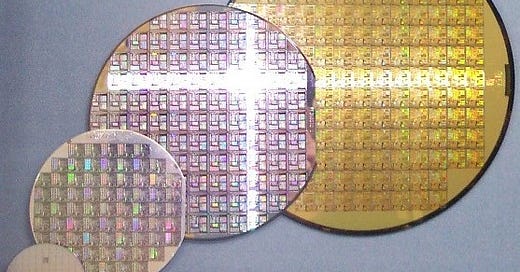By Mark LaPedus
The European Chips Act has brought new momentum to Europe’s semiconductor industry, but the program will likely fall short of its stated goals.
It is unlikely that the European Union (EU) will meet its target of a 20% share of the global market for chips by 2030, according to a new report by the European Court of Auditors (ECA).
That could represent a major setback for the EU’s semiconductor industry. Announced in 2022, the European Chips Act involves a $47 billion program to strengthen the EU’s semiconductor ecosystem. The program was introduced against a backdrop of global supply chain disruptions caused by the COVID-19 pandemic.
The aim of the program was to tackle chip shortages and boost the EU’s competitiveness in the semiconductor arena. As part of the plan, the EU hoped to boost Europe’s share of semiconductors from 8% in 2021 to 20% by 2030.
To help meet its goals, several EU-based entities have started a number of new chip pilot lines. Other chip projects are also in the works in the EU.
Still, the target of 20% global market share appears out of reach by 2030. “The EU urgently needs a reality check in its strategy for the microchips sector,” said Annemie Turtelboom, the ECA member in charge of the audit. “This is a fast-moving field, with intense geopolitical competition, and we are currently far off the pace needed to meet our ambitions. The 20% target was essentially aspirational–-meeting it would require us to approximately quadruple our production capacity by 2030, but we are nowhere close to that with our current rate of progress. Europe needs to compete–-and the European Commission should reassess its long-term strategy to match the reality on the ground.”
In addition, despite a significant increase in manufacturing capacity in Europe, the EU’s overall share of the global value chain is expected to increase only slightly, from 9.8% in 2022 to 11.7% by 2030.
There are several major chipmakers in the EU, including Infineon, NXP, and STMicroelectronics. But the EU still lacks a leading-edge chipmaker on both the logic and memory fronts.
Here are just a few of the problems with the European Chips Act:
*Not enough funding
The European Commission (EC) is responsible for only 5% (€4.5 billion) of the €86 billion in estimated funding for the Chips Act up to 2030. The remainder is expected to come from member states and industry.
*Lack of goals
“The Chips Act lacks clarity in its targets and monitoring, and it is difficult to know whether it takes proper account of the industry’s current levels of demand for mainstream microchips,” according to the ECA.
*Ecosystem issues
Several other key factors affect the EU’s competitiveness in the field. “These include dependency on imports of raw materials, high energy costs, environmental concerns, geopolitical tensions and export controls, and a shortage of skilled workers,” according to the ECA.
Several entities, including SEMI, have encouraged the EU to fund a follow-on program, potentially called the European Chips Act 2.0. The EU has yet to announce a new version of the program, however.
What about the U.S.?
Meanwhile, the United States and other nations have launched similar national chip programs. Take the U.S. for example. The U.S. has been the leader in designing new chips in the market. But U.S.’s worldwide share of chip-manufacturing capacity has declined at an alarming rate over the years.
In response, under the Biden administration, the U.S. government in 2022 launched a new program called the CHIPS and Science Act. The CHIPS Act is supposed to jumpstart chip manufacturing in the U.S.
The CHIPS Act set aside $39 billion in grants for manufacturing and $11 billion in funding for R&D and workforce development. Intel, Micron, TSMC and a few others obtained grants from the CHIPS Act. Many other semiconductor companies as well as R&D organizations and universities are on the waiting list to obtain funding.
Now, however, the CHIPS Act is in limbo. In recent times, the Trump administration more or less put the program on hold.
The Trump administration recently set up a new office that will take over and administer the CHIPS and Science Act. It's unclear how the program will work under this administration. Officials from the U.S. government did not return inquiries about this program.
Despite the uncertainty with the program, the U.S. semiconductor industry recently got a major shot in the arm. In March, TSMC announced its intention to expand its investment in advanced semiconductor manufacturing in the United States by an additional $100 billion. The expansion includes plans for three new fabs, two advanced packaging facilities and an R&D center. In total, TSMC is investing $165 billion in the U.S.
Going forward, it’s unclear if other companies will build new fabs and packaging plants in the U.S.
So like the EU, the U.S. could also fall short of its original goals with the CHIPS Act. With this program, the U.S. was originally expected to increase its share of global fab capacity for the first time in decades, growing from 10% today to 14% by 2032, according to the U.S. Semiconductor Industry Association (SIA) and Boston Consulting Group (BCG). In addition, U.S. fab capacity for advanced logic processes alone was originally supposed to grow from 0% in 2022 to 28% by 2032, they added.
Those targets seem unlikely given that the Trump administration has kept the CHIPS Act under wraps. Those targets also seem unlikely even with TSMC’s investments in the U.S. It will take more than mighty TSMC to revive chip manufacturing in the U.S.



